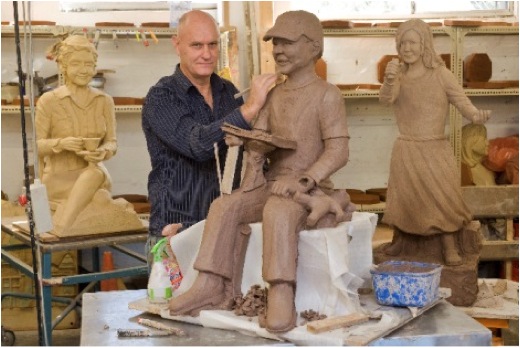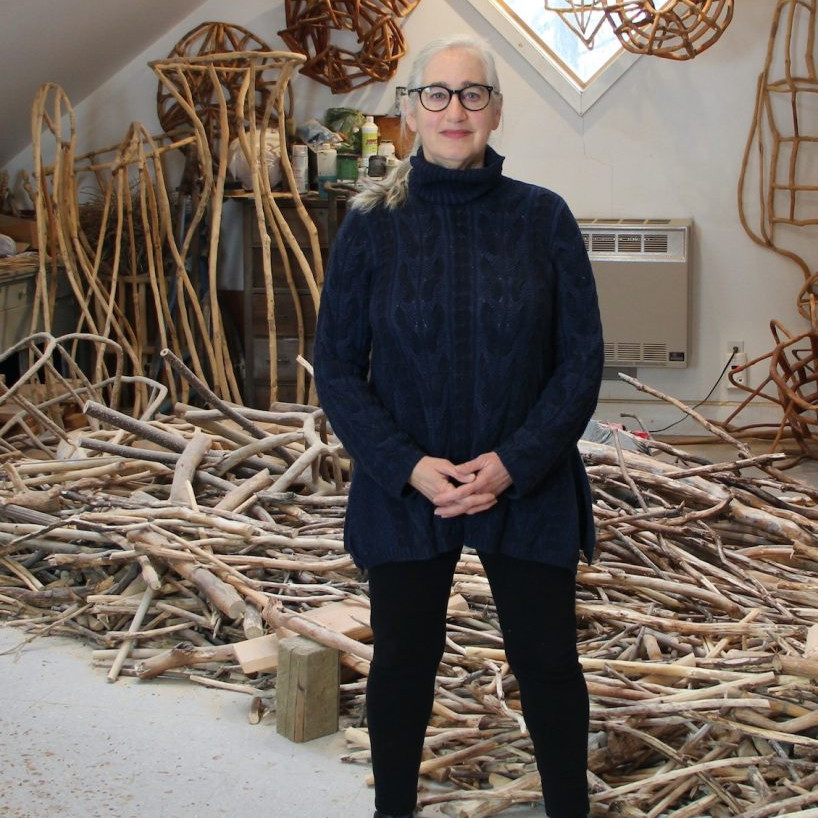Graeme Foote Sculptor - Melbourne, Australia
The very first career change was from large to small, stone masonry to jewellery and silversmith, what brought about this change?
In 1967 I became an apprentice stonemason, I learnt a lot of skills but I wasn’t making any sculptures most of the work was focused on the domestic market or very plain gravestones, so changed direction and got an apprenticeship with renowned Finish Silversmith and Jeweller Tor Schvank and became a jeweller and silversmith I got the opportunity of making fine silver sculptures.
A large part of your career was with Angela Foote in establishing “Gargoyles and Dragons”. This was a move that related to the times. Can you explain about the 1980’s and Australians fascination with Federation and your role in this?
My wife, Angela, and I were renovating an Edwardian Home and could not get a terra cotta dragon for the roof of our home, so I set about learning to make them. Once I had successfully put our first dragon on the roof I was approached by builders and home renovators to make them a dragon. We moved house and started another renovation project and could not get any terra cotta finials or ridges to match our roof, so I set about to make some myself, this did take quite a bit of developing till I was happy with the end product, this opened a floodgate of orders from builders and tilers throughout Australia, and all of a sudden the Terra Cotta work was taking over from the jewellery. Angela and I decided to start up ‘Gargoyles and Dragons’ together in a fulltime capacity, which grew to us employing up to 6 staff at a time. Four years ago I sold this business to one of my long time employees so that I could focus on my artwork fulltime. I am very proud of the contribution we made to the restoration of Federation Homes around Australia with the introduction of our terra cotta building products, allowing our heritage to continue for future generations in it is true glory.
Is your current work usually based on a theme? Why do you find this works so well for you?
My current artwork over the last 10 years has been based on the human body with a focus towards humanity and love, as I see a need for more of both in the world at the moment, I see my work as a social conscience and hopefully reminding and enlightening the viewer to stop and think more.
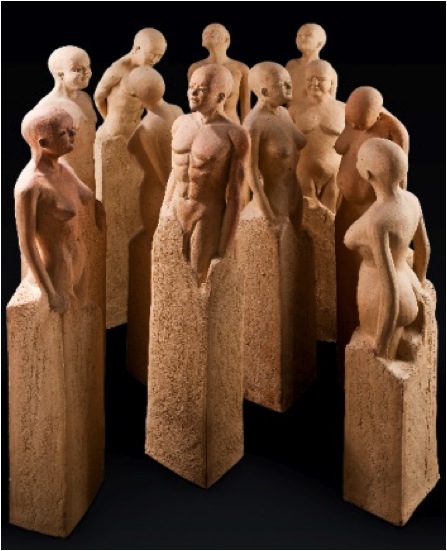
‘Humanity’’
How far ahead do you need to prepare?
I am always thinking of new ways to take my art and would generally be working on the next two years of exhibitions.
Your current exhibition is based on books can you expand on this?

Hawthorn Studio & Gallery,
635 Burwood Road,
Hawthorn East Victoria Australia
My current exhibition ‘Book Memories’ came about after my previous exhibition ‘Humanity’ which was looking towards the future and how we all need to work together, from there I thought on how I got to that point? After much reflection I realized it was though the books I had read in the past, so I wrote down the books that had inspired me over my life and was able to see a path from the past to current time. I then wanted to portray the books of most significance and bring them to life; the exhibition is a tribute to the authors of the books and the power of the word.
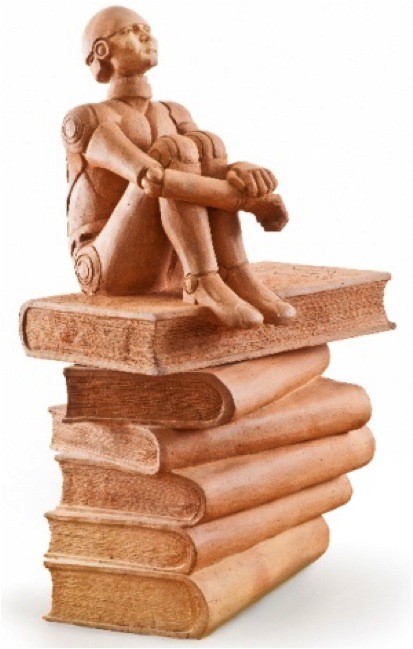
‘Robot Versions’
One of your other series was “6 Influential Australian Women”. Can you explain the logistics of this series?
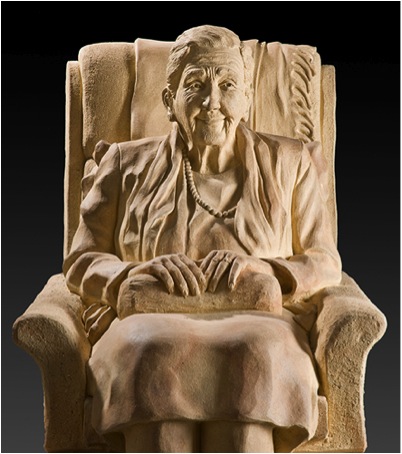
‘Dame Elisabeth Murdoch’
This exhibition came about through my mother who made the statement to me one day about how she felt invisible as a woman in society and on the street once she was over 50 years old. I then researched sculptures of woman in Melbourne and found there was very few, most portrait sculptures were of sportsman, war hero’s, explorers and pioneers. I then thought how many women were just as strong role models but were given no recognition with a sculpture in society.
How did you choose the 6 women?
I then thought of current women who were great positive role models in our current society and came up with my top 6. I approached each of these ladies who all agreed to meet and sit for me to sculpt life size sculptures in stoneware of them.
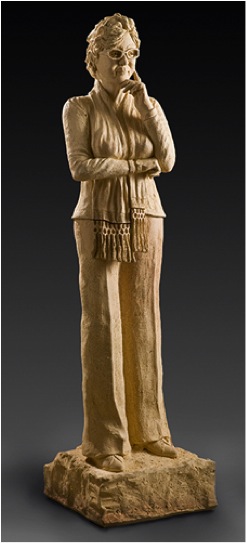
‘Janet Holmes à Court’
All 6 women had given their valuable time to help humanity in various ways, I found them to be selfless, good people that society could all learn from.
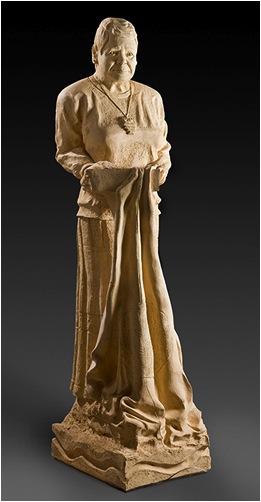
‘Lowija (Lois) O’Donohue’
The women sculpted were Dame Elisabeth Murdoch, Janet Holmes a Court, Lowija (Lois) O’Donohue, Jeanne Pratt, Stephanie Alexander & Christine Nixon.
I chose to sculpt them in relaxed poses.
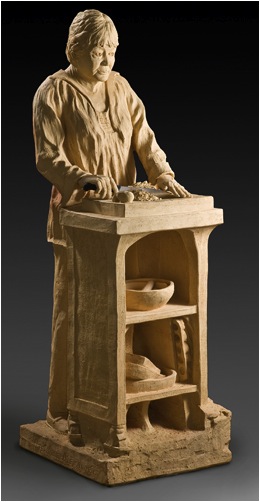
‘Stephanie Alexander’
Editor’s note:
Dame Elisabeth Joy Murdoch AC DBE 1909 – 2012, was an Australian philanthropist.
Janet Holmes à Court, AC, 1943 is an Australian businesswoman,
Lowitja “Lois” O’Donoghue, AC, CBE, DSG 1932 is an Aboriginal Australian retired public administrator.
Jeanne Pratt, Victorian of the Year 2013, philanthropist.
Stephanie Ann Alexander OAM is an Australian cook, restaurateur and food writer,
Christine Nixon 1953 was the Chief Commissioner of Victoria Police 2001- 2009.
You do commissions, how do these fit into your timetable?
I always make time for private commissions, as I love the sharing of ideas between myself and the client to form a new artwork and often in a direction that I may never have experienced; it is exciting to have a stranger share their thoughts and ideas.
Your studio is at the rear of your Gallery. Can you take us into the studio and discuss some of the special equipment and spaces your art needs?
As most of my art practice is large sculptures that dictate the layout and equipment that I need, starting with my most loved hydraulic lift table, which saves my knees and enables me to move large pieces on to other trolleys of different heights. From the studio I can move pieces over to the fork lift to load them into the kiln. The kiln is a large trolley kiln that I built with my son, Ryan.
Another interesting technique is a combination of ceramics and resin. Can you expand on this work?
I really like using other mediums with ceramic. I have been embedding some of my ceramic artwork in resin which gives the artwork another dimension, it gives the illusion of looking into water or ice and the sculpture is distorted so that you have to study the piece to see into it, the resin carries light and colour into the sculpture.
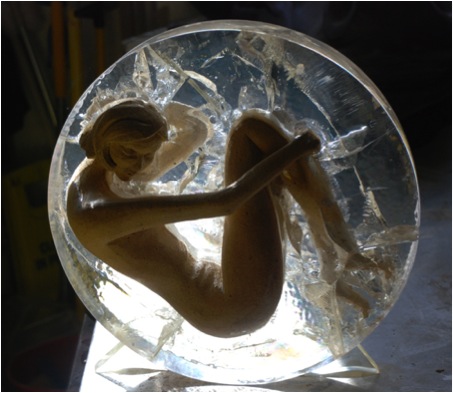
What technical improvements have happened since the 1970’s and how have these changed your work?
My ceramic practice is different to many ceramicists as I start with a large built up block of clay and then carve into the block, I think this technique comes from my stonemasonry background. I carve a shape then hollow out the sculpture then finish the detail. Carving tools are still mainly wooden tools which are similar tools that have been used for hundreds of years. The only improvement in recent years has been the hydraulic lifting equipment now available.
Contact Details:
www.graemefoote.com
www.hawthornstudiogallery.com.au
Graeme Foote, Melbourne, Australia.
Interview by Deborah Blakeley, August, 2013
Think a colleague or friend could benefit from this interview?
Knowledge is one of the biggest assets in any business. So why not forward this on to your friends and colleagues so they too can start taking advantage of the insightful information the artist has given?
Other artists you may be interested in:


